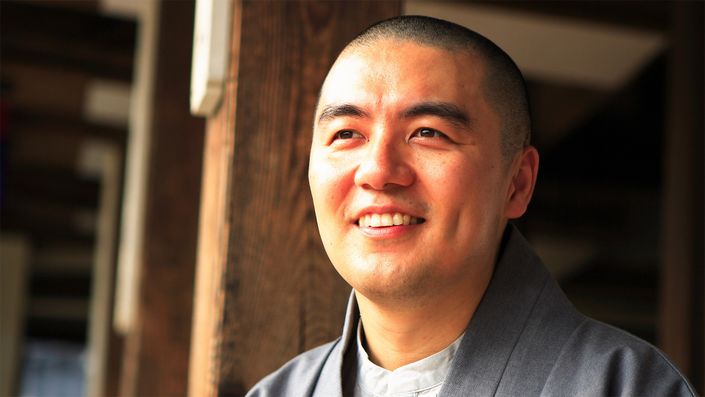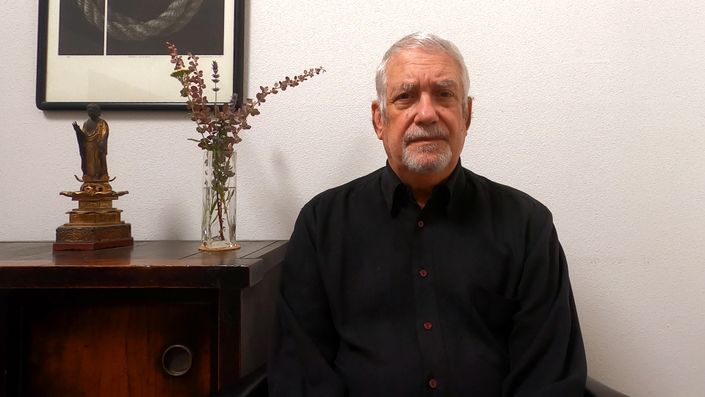Learn to Write Haiku:
Mastering the Ancient Art
of Serious Play
Join Clark Strand in an engaging, self-paced exploration of this accessible and profound style of poetry.

I have forgotten
most of what I learned about
emptying my mind
— Clark Strand
Write brilliant haiku
Fun, poignant, witty, fresh. Haiku is the perfect art form to share with friends and loved ones and online. This course will show you the basics and give you a new appreciation for this accessible but profound style of poetry.
Clark Strand has 45 years of experience writing haiku and is the author of Seeds From a Birch Tree: Writing Haiku and the Spiritual Journey. He is an experienced teacher of haiku and the ideal guide for those looking to master their skills, express their love for nature, or simply have some fun.


Study online, start today
This easy-to-use online course is available to all. It comprises six units that form a program of instruction, writing prompts, and the opportunity to share with community. Each unit contains around 45-60 minutes of material to study, as well as writing exercises. You are free to study at your own pace, and will retain ongoing access to the material.
The course includes recordings of Zoom Q&A sessions with Clark Strand that took place during the initial course launch.

What is a haiku?
A haiku is a three-line poem. The first line and the last line have five syllables. The middle line has seven. Each haiku has a "season word" that hints at what's happening in the natural world. There is also a turning point on which the poem hinges. Haiku may only have 17 syllables but they always have more than 17 syllables of meaning.
The first haiku poems were written in Japan over 300 years ago. Today, haiku poetry is written wherever there are people and in any language they speak.
What you will learn
• The 5-7-5 syllable form.
• The use of season words.
• Creating an original “turn of thought.”
You will also get a firm grounding in the history of haiku and will experience the various ways that haiku poets encourage one another and collaborate in producing a common body of literature. Most of all, you will learn to use haiku as a way of going “eyeball-to-eyeball” with the four seasons, learning to experience everything in nature as sentient and alive.

Activities
• Four weekly haiku challenges and a course anthology.
• Ginkos, or “poetry walks,” where you will venture outdoors in your area and write seasonal haiku about what you see.
• Experiments in the emerging genre of popular haiku.


Just as a clam parts
from its shell I, too, will part…
autumn will depart
—Matsuo Bashō
Benefits

A literary life
Why is haiku so popular? So many people read, write, and share haiku because it is a form of poetry that speaks the language of the here and now, yet somehow goes beyond itself.

Dedicate yourself to a spiritual art
The road to haiku mastery develops many spiritual qualities such as receptivity and mindfulness, sensitivity and tenderness, as well as literary skill.

Be part of the haiku community
Haiku is for everyone. This course will feature prompts and challenges and many opportunities to learn by writing.

Be part of a long tradition
Poets have been writing haiku for hundreds of years. We'll explore the work of the masters—both historical and contemporary—and add our own voices.

Simple rules, great depth
The principles of haiku are easy to pick up but there is so much depth and subtlety here. Whether you're a beginner or a seasoned poet, this course has a lot to offer.

Find inspiration where you are
One of the pleasures of writing haiku is the ginko, a poetry walk. It's a great way to be receptive to your surroundings and to find meaning and creativity wherever you go.

The rock in the stream—
a rock that flips the water
onto its white side
— Clark Strand

Clark Strand
Clark Strand is a former senior editor at Tricycle: The Buddhist Review. His books include Seeds From a Birch Tree: Writing Haiku and the Spiritual Journey and The Way of the Rose: The Radical Path of the Divine Feminine Hidden in the Rosary, which was co-authored with his wife, Perdita Finn. He teaches the popular group “Weekly Haiku Challenges with Clark Strand” on Facebook and leads Tricycle's monthly haiku challenge, as well as the Tricycle Haiku Challenge Facebook group.

Moon of midwinter—
the pines have shot their needles
deep into the rocks
—Yosa Buson
Course Curriculum

For beginners and experts
Like haiku poetry, this course is for everyone. This art form is easy to pick up and start having fun with. Your next haiku could be inspired, even a masterpiece. And it might only take a moment to write! It does help to know what you're doing, though, and be part of a community. Clark can set you on the road.
Even if you have a long history with haiku, let Clark offer his years of study, composition, and teaching to further attune your writing sensibility.
Testimonials
Praise for Clark Strand's haiku courses
Whether you’re a beginner, or if you’ve been writing haiku for years, if you have a chance to study with poet/author, Clark Strand, grab it. A gifted poet and teacher, Clark has a knack for diving deep into his students’ poems, gently guiding each of them to grow. His deep understanding and knowledge of the form makes him one of the finest (if not the finest) teachers of haiku in the English language.—Suzanne Tyrpak, Author & Haiku Poet
To study haiku with Clark Strand is to enter a world of poetic play that is grounded in nature and the seasons. In his Weekly Challenge group and Master Class, I learned to turn my eye inward and outward as we studied haiku masters, ancient and modern, wrote dozens of haiku, shared them with the group, and received feedback from Clark. Working with a group of interesting people from various walks of life became a highlight of my week.—Susan Polizzotto
I cannot recommend Clark’s workshops, classes, and haiku challenges highly enough. I have gained a new world of poetry along with a network of poets to share that world.—Rev. Jaeni Aarden Minister, International Metaphysical Ministries Poet and Artist
Clark is an exceptional and rare teacher whose love of haiku is infectious. He has a vast knowledge of haiku and expertly guides us in expressing ourselves and nature in the spirit of play. Also, the support and encouragement from this community has made writing fun again and, as I've found, invaluable to writing consistently.—Kelly Shaw
I’ve spent the past few years gleaning all that I can from Clark through the Weekly Haiku Challenge group and now his Master Class. A true master with years of experience, his haiku skills are honed yet still evolving, and he has me completely hooked.—Dana Clark-Millar
Strand’s clear instructions on writing haiku is also a pathway for the practice of kindness and simplicity.—John Fox, Finding What You Didn’t Lose
Clark Strand weaves poetry, weather, and Zen into a delightfully luminous pathway anyone can walk.—Rick Fields, How the Swans Came to the Lake: A Narrative History of Buddhism in America
I love the community aspect of the writing experience. It has been twenty years since I did any creative writing, and I have never tried my hand at poetry. It has already been a life-changing experience, and I look forward to continuing to learn with you and the group.—Noga Shemer

The fly in amber
from the age of dinosaurs
must be really bored
— Clark Strand



